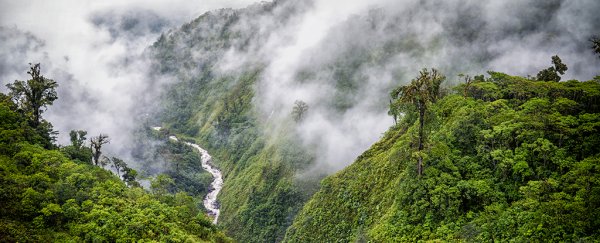Tropical forests are hugely important carbon sinks. We need these beautifully diverse areas to help maintain Earth's atmosphere - and now, a new study has looked into just how much carbon these forests absorb.
It's not just a curiosity. Estimating the efficiency of such natural carbon sinks is one of the numerous factors that needs to be carefully calibrated in order to make scientific climate change modelling as useful as possible.
The general assumption has been that the more diverse the vegetation in tropical forests and the greater number of plant species present, the more efficiently carbon can be trapped.
"We wanted to find out how much detail we need to know in order to make valid assumptions in terms of the strength of tropical carbon sinks," says ecologist Florian Hofhansl, from the International Institute for Applied Systems Analysis (IIASA) in Austria.
"In other words, how much carbon is actually sequestered by tropical vegetation?"
The team studied a variety of plant species, including trees, palms and lianas (or woody vines), looking at the amount of carbon each one was capturing and the different ecological balances at play behind that carbon trapping.
Using their own measurements and previously logged data for the Osa Peninsula region in Costa Rica, the researchers weighed up biotic (plant species) and abiotic (local environment) factors and their impact on carbon sequestration.
They found that there's actually an interaction between biotic and abiotic factors – including soil properties, for example – that affects carbon storage. In the case of palm trees, for instance, if the soil has low phosphorus availability, the trees grow more abundantly.
The availability of resources like water and nutrients also play a significant role: the team found that soil texture and chemistry had a noticeable effect on the composition of plants, another of the levers at work in these ecosystems.
In addition, sites with less resources contained less diverse plant communities than those with ample soil water and nutrient supply.
What these efforts show is that there's no simple calculation to work out carbon storage levels for tropical forest regions, and it's not always the case that a greater variety of plant life leads to more carbon getting trapped. The study indicates our models will need to get even more detailed.
Those models are going to be invaluable as we try and mitigate the effects of increasing levels of carbon dioxide in the atmosphere, whether that's through natural or artificial means.
Ultimately, the researchers say, we're going to need to combine data from multiple fields including botany, plant ecology and geology to get a more accurate idea of how tropical forests act as carbon sinks, and how that might have knock-on effects to the climate.
"We can only arrive at the right conclusions and provide future projections of how much carbon can be stored if we understand the complexity within ecological systems and what this means for atmospheric feedbacks," says Hofhansl.
The research has been published in Scientific Reports.
